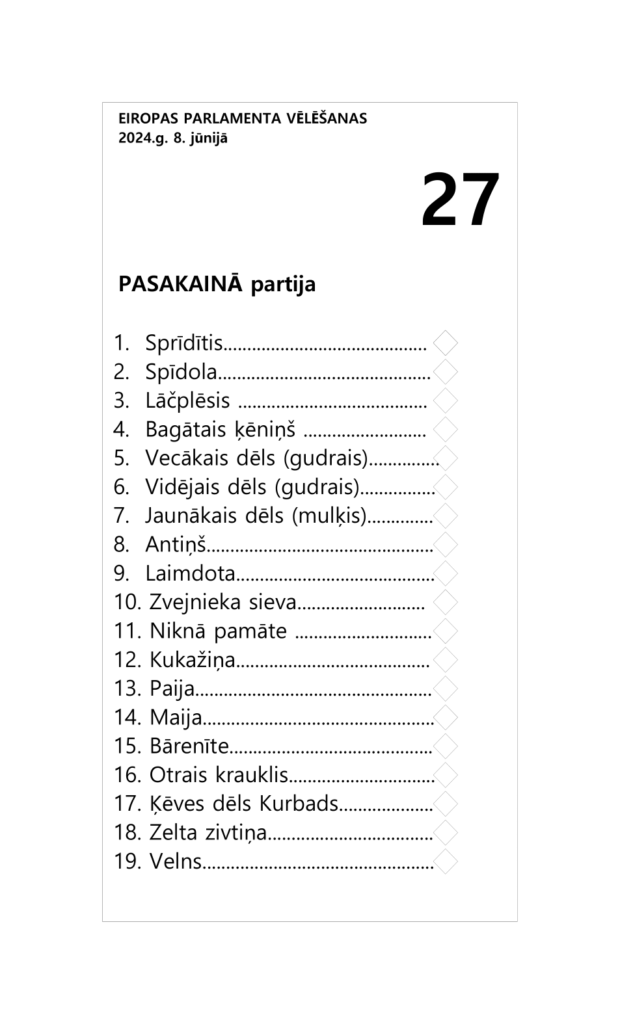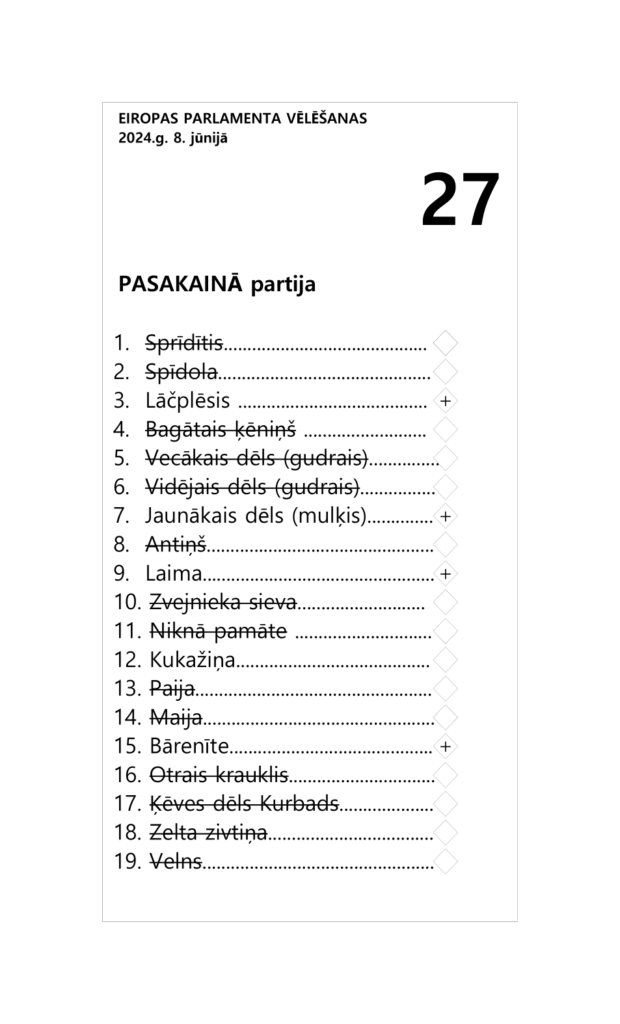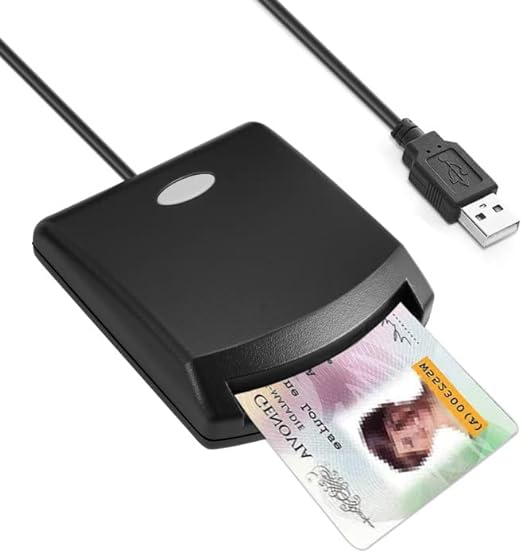Mums, Latvijas pilsoņiem, ir teikšana par to, kuras partijas un deputāti pārstāvēs Latviju Eiropas Parlamentā. Ievēlēsim kandidātus, kas strādās par labu brīvai, demokrātiskai, latviskai Latvijai. Balsosim!
Eiropas Parlamenta vēlēšanas notiks 2024.g. 8. jūnijā. Kanādā Latvijas pilsoņi varēs balsot klātienē Toronto vai Otavā, no 8:00 līdz 20:00 EDT.
Ir arī iespēja balsot pa pastu, piesakoties onlainā starp 4. maiju un 31. maiju.
Vai varu balsot klātienē uzrādot tikai derīgu eID karti?
Jā, var uzrādīt vai nu derīgu Latvijas pasi vai derīgu eID karti.
Kur varēšu balsot klātienē 8. jūnijā?
Kanādā varēs balsot klātienē Otavā vai Toronto. ASV būs četri iecirkņi: Čikaga, Ņujorka, Vašingtona un Losandželosa. Pēc likuma Latvijas pilsoņi drīkst balsot jebkurā iecirknī visā pasaulē. Viss kopā būs 945 iecirkņi Latvijā un 50 iecirkņi ārzemēs. Te ir pilnais iecirkņu saraksts.
Lai balsotu, ir jāuzrāda derīga Latvijas pase VAI derīga eID karte.
Balsošanas laiks ir no 8:00 līdz 20:00.
Adrese Otavā: Embassy of Latvia in Canada, 350 Sparks St. #1200, Ottawa, ON K1R 7S8
Adrese Toronto: Latviešu Centrs Toronto, 4 Credit Union Dr, North York, ON M4A 2N8, Canada
Kur varu atrast partiju un kandidātu sarakstu?
Cik deputāti tiks ievēlēti no Latvijas Eiropas Parlamentā?
Latvijai būs 9 deputāti Eiropas Parlamentā. Viss kopā ir 720 vietas. Kaut gan Latvijas deputātu skaits ir mazs, Latvijas deputāti var ieteikmīgi strādāt EP komitejās, piestrādājot pie likumprojektiem, kas būtiski iespaido Latvijas nākotni.
Par cik partijām un kandidātiem drīkstu balsot?
Var tikai balsot par VIENU partiju. Jāizvēlās balsošanas zīme tai partijai, kuru vēlaties atbalstīt.
Uz katras partijas balsošanas zīmes ir tās partijas kandidātu saraksts numurētā secībā (#1, #2, #3, u.t.t.). Jums nav jāizmeklē deviņi kandidāti. Pieliekot “+” zīmi, vai izstrīpot vārdus, varat virzīt uz augšu vai uz leju nevienu, dažus, vai visus kandidātus Jūsu izvēlētajā partijā.
Kā aizpildīt balsošanas zīmi?
Uz katras partijas balsošanas zīmes ir tās partijas kandidātu saraksts numurētā secībā (#1, #2, #3, u.t.t.) Ja Jums īpaši patīk kāds kandidāts no tās partijas, varat pielikt “+” pretī tā kandidāta uzvārdam. Ja Jums kāds kandidāts nepatīk, varat izstrīpot viņa vārdu vai uzvārdu. Krustiņi un strīpošana noteiks, kuri kandidāti ieņems tās partijas iegūtās vietas. Jums nav jāizmeklē deviņi kandidāti. Varat virzīt uz augšu vai uz leju nevienu, dažus, vai visus kandidātus Jūsu izvēlētajā partijā.
Skat. piemēru:


Dzirdēju, ka ja nevaru balsot klātienē, ir iespējams pieteikties balsot pa pastu. Kas ir process?
Var pieteikties balsot pa pastu starp 4. un 31. maiju.
Lai pieteiktos balsot pa pastu, vajag:
- derīgu eID karti
- PIN un PUK kodus (paroles), ko saņēmāt kopā ar eID karti
- eID lasītāju (Smart Card reader)
- drukātāju (printer)
- laptopu vai kompjūteru ar “USB port” un piekļuvi internetai
Var arī pieteikties lietojot onlaina piekļuvi Jūsu Latvijas bankas kontam.
Pieteikšanās notiek portālā www.latvija.lv vai http://www.pmlp.gov.lv
Vēlaties detalizētas instrukcijas par balsošanu pa pastu? Klikšķiniet šeit.
Kur varu iegādāties eID kartes lasītāju (Smart Card reader)?
Ir grūti atrast eID lasītājus veikalos Kanādā. Vislabāk atradīsiet tos onlainā, piem. Amazonā. Tie nav dārgi. Ir ieteicams izvēlēties modeli, kur fotoattēlā tieši parāda, ka lasa Eiropas eID kartes. (Use the search terms “European eID smart card reader”).
Varat arī aizņemties eID lasītāju no kāda cita. Iesakām latviešu centriem iegādāties lasītāju, ar ko varat dalīties.
Lūdzu atrakstiet uz admin@lnak.org, ja Jums ir vajadzīga palīdzība sameklēt vai aizņemties eID kartes lasītāju.

Nevaru atrast savus PIN un PUK kodus. Vai vai ir iespējams ātri dabūt jaunus, lai varu pieteikties balsot pa pastu?
Tas ir iespējams, ja nekavējaties. Vispirms sazināties ar vēstniecību (613-238-6014) vai embassy.canada@mfa.gov.lv. Tad:
1) jāsūta eID karte uz vēstniecību + jāpievieno papildus xpresspost vēstule ar savu adresi (lai pēc tam to nosūtītu atpakaļ);
vai
2) var aiziet uz vēstniecību un aktivizēt klātienē. Process aizņem 10 minūtes.

I have 2 main QUESTIONS (not comments) regarding the upcoming EU parliamentary elections.
1) First, thanks for all the great information already provided via the Zoom seminars from Andrew Gobins & Iveta Kazoka!
2) After you have resolved all the issues arising from mailed ballots, I hope LNAK will be able to provide information on the best strategy, based on past experience, to use in the actual voting on the ballot (not in party selection). I’m sharing all your excellent information with my daughter who lives & works in New York – the younger generation there is not receiving the type of great information you are providing!
3) QUESTION #1: The Centrala Velesanas Komisija says in its website: “In the ballot paper, the voter can mark “+”, leave no mark, or delete the candidates name or surname in the space provided in front of the names of the candidates.” Using the party Jauna Vienotiba as an example, which of these 3 actions would be the best strategy for improving the election chances for Sandra Kalniete or Dace Melbarde? Or for protecting the position of Valdis Dombrovskis? Or, even, to protect Krisjanis Karins from continuing negative onslaught? Surely, there’s a strategy to all this! What works?
4) QUESTION v#2: If we use the pluses or cross out any names, what errors should be avoided in the use of these markings to ensure that the ballot remains valid? Are those instructions clear on the ballot? Are there any sample ballots with instructions available anywhere?
Thanks for all your great work regarding these upcoming EU elections!
Thank-you for your feedback and questions!
QUESTION #1
Each party’s ballot has a list of their candidates ranked in order (#1, #2, #3, etc.). The party strategy is to generally put their most popular candidates at the top of the list, since most voters pay attention to the names at the top of the list. In the seminar on May 4 Iveta Kažoka pointed out that some parties chose to put an older, broadly popular politician at the top of the list, but then followed that with a younger person who would appeal to a different demographic.
When it comes down to which candidates are actually elected, the ranking only comes into play if two candidates get the same number of votes. If you want to increase the chances for your favourite candidate(s) to be elected, you can put a plus in the small diamond beside their name. You can decrease a candidate’s chances by crossing out their name or surname. Votes for a candidate are calculated as follows: (number of votes for the party) + (number of pluses for the candidate) – (number of “crossed out” for the candidate). The candidates with the highest number of votes get the seats that have been won by that party. If there is a tie between candidates within the party, the candidate with the higher original ranking (#1, #2, #3, etc.) gets the seat.
This makes the pluses and “cross outs” very important – they determine which candidate(s) get that party’s seat(s).
In terms of strategy, it helps to remember that the seats will be spread across parties, and no one party is likely to have more than three seats. In the 2019 EP elections, Latvia had eight seats, but now in 2024 they will have nine seats.
Make sure that you are voting for a party that is likely to cross the 5% barrier of the Latvian popular vote which is needed to qualify for a seat in the EP. Understand that even being over 5% does not guarantee that the party will receive a seat.
To help your favourite candidate(s) get elected, you should put a plus beside their name(s) and cross out all the other names. If you leave the ballot blank with no pluses or cross outs, you are essentially saying that you like all the candidates equally, and you are letting others choose who actually gets the seats.
3) Using Vienotība as an example, the first five candidates in order are: Dombrovskis, Kariņš, Kalniete, Vaidere, Melbārde. If your main goal is to get Kalniete and Melbārde elected, you would put a plus beside each of their names and cross off all the other names. To protect Dombrovskis, you would put a plus beside his name, and cross off all the others. Same for Kariņš. If your foremost goal was to protect Dombrovskis and Kariņš, you would put pluses beside their names and cross off all the other names including Kalniete and Melbārde. If you like all four equally, give them pluses, and cross off the rest.
It helps to consider how popular you think each candidate is with other voters, and how many seats you think Vienotība will get. In 2019 Vienotība got two seats (Dombrovskis and Kalniete). When Dombrovskis became Executive Vice-President of the European Commission, his seat was vacated, and the next in line from Vienotība, Inese Vaidere, got a seat. Vienotība then got a third seat when Melbārde (elected as part of another party) switched parties to Vienotība.
Anything can happen in elections and we are certainly not in a position to make predictions, but based on what we have heard in the seminars so far, reading the press, and following polls, you could predict the likely and maximum number of seats you think Vienotība could get.
Unfortunately it is impossible to predict the correct strategy because it really depends on how everyone else is going to mark up their ballot. The most important message is to use those pluses and cross-outs because they really do determine who gets a seat.
QUESTION #2
We will post a picture of a sample ballot (we can’t put graphics in this comment reply) on this page. In words, the only thing you can do to a ballot is put a plus in the diamond beside someone’s name OR cross off the person’s name or surname. Any other marking would invalidate the ballot.
You can only choose and submit ONE ballot, i.e. you cannot mix and match candidates from various parties.